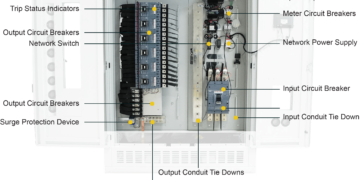Search engine visibility is one of the main elements influencing the success of websites and online content in the constantly changing field of digital marketing. In order to decide which pages show up in its search results, Google, the leading search engine, mainly depends on indexing. It’s essential to understand Google indexing, canonical tags, and noindex directives in order to manage your website’s exposure and SEO (Search Engine Optimization). We’ll look at how these tools can help you take control of your online presence, improve your website, and steer clear of SEO traps.
What is Google Indexing?
The method by which Googlebot, Google’s web crawler, finds and saves content from the internet into Google’s database is known as Google indexing. A page is qualified to show up in Google’s search results once it has been indexed. On the other hand, not all of a website’s pages require indexation. Some pages might offer a subpar user experience, duplicate content, or have little SEO value.
Canonical tags and noindex directives are used in this situation. By giving you command over which pages Google indexes and which it ignores, these tools can help you make sure your website is as effective and optimized as possible.
The Role of Canonical Tags
What is a Canonical Tag?
An HTML element in the section of a webpage that indicates to Google which version of a webpage is the “master” or preferred version is called a canonical tag (rel=”canonical”). This is especially helpful for websites that have similar or duplicate material on several pages. Google may consider these pages to be duplicate material if they don’t include a canonical tag, which could hurt your SEO.
Why Are Canonical Tags Important?
In digital marketing, unique content is highly valued. However, there are many instances where duplicate content can appear unintentionally, such as:
- Product pages with slight variations (e.g., color or size)
- Printer-friendly versions of a page
- Category pages with overlapping content
- URL parameters that lead to the same content
The SEO value of these pages may be diminished if Googlebot indexes them as distinct entities, which would make it more difficult for your content to rank. By combining ranking signals, canonical tags address this issue and guarantee that only the content that is desired is indexed.
Example of Using a Canonical Tag
Suppose you run an e-commerce store selling a particular product in different colors. You might have multiple pages like:
- www.example.com/product-blue
- www.example.com/product-red
- www.example.com/product-green
Though discussing the same product, these pages differ somewhat in color. You can indicate that the primary URL (www.example.com/product) is the version that Google prefers to index by adding a canonical tag to each page. This is how you would go about doing that:
Html Code
<link rel=”canonical” href=”https://www.example.com/product”>
This guarantees that, even in the event that many versions of the page exist, Google recognizes the original page as the one to rank and consolidate the SEO value.
Understanding the “noindex” Directive
What is a “noindex” Directive?
The <head> portion of a webpage contains an instruction called the noindex directive that instructs Google not to index that page. This implies that Googlebot will still crawl the page even though it won’t show up in Google search results. Pages that are not intended to appear in search results, like thank-you pages, login pages, and internal search results, benefit greatly from the noindex directive.
The noindex directive is implemented like this:
Html Code
<meta name=”robots” content=”noindex”>
Why Use the “noindex” Directive?
Not all pages on your site need to be indexed by search engines. In fact, some pages may hurt your SEO if they are indexed. For example:
- Thank-you pages after a user completes a transaction. These pages do not add value to search engine results and only serve to confirm an action.
- Login and account pages. These pages are typically meant to be private and irrelevant for search engines.
- Duplicate content. If there is duplicate content on your site that you do not want to canonicalize, a noindex directive is a safer option.
By using the noindex tag, you ensure that Google doesn’t waste its crawling resources on these non-essential pages, focusing instead on pages that offer value to your audience.
Example of Using the noindex Directive
Suppose your e-commerce site has a thank-you page that appears when a customer completes a transaction. This page should not show up in search results. To make sure Google ignores this page, you can include the following meta tag:
Html Code
<meta name=”robots” content=”noindex”>
Combining Canonical Tags and noindex Directives
The canonical tag and the noindex directive may need to be used in tandem in some situations. For example, you may have a page with duplicate content that you want Google to crawl for various purposes but don’t want to rank. In these situations, the canonical tag tells Google that the original version should be indexed instead, while the noindex directive guarantees the page won’t show up in search results.
Here’s how it would look:
Html Code
<meta name=”robots” content=”noindex”>
<link rel=”canonical” href=”https://www.example.com/original-page”>
This setup ensures that Google doesn’t index the duplicate page, but it still knows which page to prioritize for ranking.
Best Practices for Canonical Tags and noindex Directives
1. Avoid Using Both on the Same Page
In general, it is not advisable to use the canonical tag with the noindex directive on the same page. Using a noindex tag eliminates the need for the canonical tag since Google will not index the page. Canonical tags are only functional when the page is indexed.
2. Implement Proper Tracking and Testing
After you’ve set up canonical tags and noindex directives, you should check your pages in Google Search Console to make sure they are being indexed (or not) as planned. By leveraging Google’s useful information about how it perceives your website, you can find any indexing issues.
3. Use Canonical Tags on Pagination
Page pagination (e.g., page 1, page 2, etc.) is another context in which canonical tags are helpful. By including canonical tags pointing to the main category or product page, you may prevent Google from viewing each paginated page as a duplicate.
Conclusion
By using Google indexing, canonical tags, and noindex directives as part of your digital marketing strategy, you may increase the exposure and SEO of your website. By addressing duplicate content concerns with canonical tags, you can make sure Google is indexing the correct version of your webpages. The noindex directive, on the other hand, helps you keep your website focused on relevant content by assisting you in controlling which pages show up in search results.
All of these resources work together to provide a solid strategy for improving your website’s operation and ensuring that it is optimized for both search engines and users. When used properly, they may help you improve your rankings, ensure that the right people view your content, and protect your website from typical SEO issues.























































